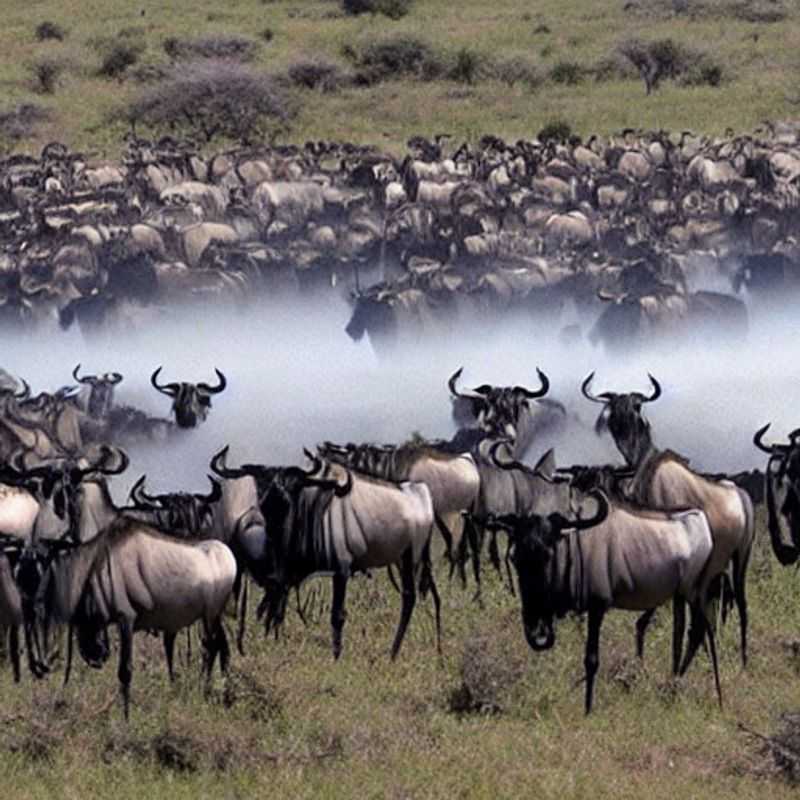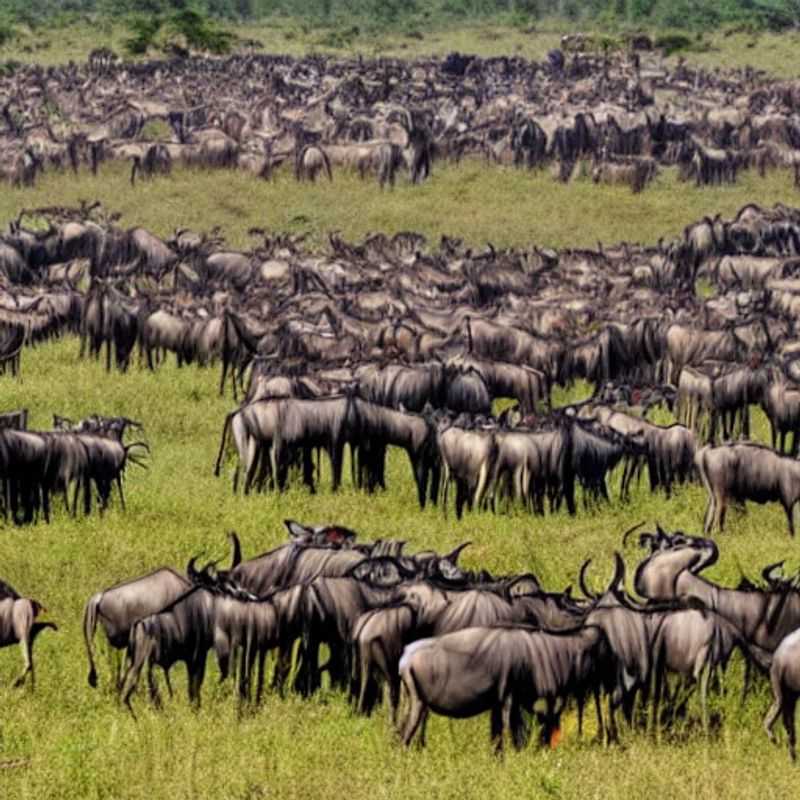Wildebeest Migration Safety: Top 5 Best Practices for a Safe & Amazing Safari in Kenya/Tanzania

Wildebeest Migration 2026: Your Essential Safety & Practical Guide for Kenya & Tanzania
Planning to witness the majestic Wildebeest Migration in Kenya and Tanzania in 2026? Safety and preparedness are paramount for an unforgettable experience. This guide offers essential practical tips to ensure your journey is both thrilling and secure.
Firstly, book your safari well in advance, especially for 2026. Reputable tour operators will handle permits, accommodation, and experienced guides, which is crucial for navigating remote areas and understanding wildlife behavior. Choose a reputable safari company that prioritizes ethical tourism and has a proven track record of safety.
When it comes to health, consult your doctor about necessary vaccinations and malaria precautions well before your departure. Pack a comprehensive first-aid kit with essentials like antiseptic wipes, bandages, pain relievers, and any personal medications. Carry insect repellent with a high DEET concentration to protect against mosquitoes and other biting insects.
During game drives, always follow your guide's instructions implicitly. They are experts in wildlife behavior and know how to maintain a safe distance. Never exit your vehicle unless explicitly permitted by your guide. Keep your hands and arms inside the vehicle at all times, and avoid sudden movements or loud noises that could startle animals.
Be mindful of the weather. Pack layers of clothing suitable for varying temperatures, from cool mornings to warm afternoons. Lightweight, neutral-colored clothing is recommended to blend in with the environment. Don't forget sun protection: a wide-brimmed hat, sunglasses, and high SPF sunscreen are essential.
Hydration is key, especially in the African heat. Drink plenty of bottled water throughout the day. Be cautious about what you eat; stick to reputable lodges and restaurants. Always use bottled or purified water for drinking and brushing your teeth.
Finally, respect the wildlife and their habitat. Do not feed the animals, and never leave any litter behind. By adhering to these practical tips, you can ensure your 2026 Wildebeest Migration adventure is a safe, responsible, and truly awe-inspiring journey.

You may also like
Wildebeest Migration: A Safari Adventure – Safety & Geopolitical Considerations
Kenya & Tanzania Safari: Your Safety First – Navigating the Migration
Exploring the Great Migration: Peace of Mind & Unforgettable Moments
Safe Travels on Safari: Understanding Geopolitical Stability in the Migration Zone
The Wildebeest Migration: A Journey of Discovery with Safety as Your Compass
Tanzania & Kenya Safari: Tips for a Safe & Thrilling Migration Experience
Wildlife Wonders & Wise Travel: Your Guide to a Safe Great Migration Safari
Adventure Awaits: Prioritizing Safety During the Wildebeest Migration
Great Migration Safari: Embracing the Adventure, Ensuring Your Safety
Your Dream Safari: Geopolitical Awareness & Safe Travel Practices in East Africa
Jambo! Asante for considering a trip to witness the magnificent Wildebeest Migration in Kenya and Tanzania during spring! I'm your friendly safari guide, ready to help you plan an unforgettable experience for you and your loved one. Spring (roughly July to October) offers incredible viewing opportunities, but it's also vital to understand the geopolitical landscape for safe and enjoyable travel.
Geopolitical Stability: Both Kenya and Tanzania are generally safe for tourists, but it’s always wise to check current travel advisories from your home country before you go. The regions hosting the migration are generally stable, and tourism is a significant part of their economy, meaning safety and security for visitors is prioritized. However, staying informed on any local developments is always a good practice.
Cultural Immersion: Expect warm hospitality. Kenyans and Tanzanians are known for their vibrant cultures. You’ll likely encounter Maasai people, famed for their distinctive red clothing and jewelry. Their traditions are deeply rooted in their pastoral lifestyle. You might see them herding cattle or engaging in traditional dances (often in organized events for tourists; participation may incur a small fee of around $10-20 per person). The local cuisine is diverse and delicious – think nyama choma (grilled meat), ugali (a maize flour porridge), and delicious stews. Dining in local restaurants is relatively inexpensive; budget around $20-40 per couple per meal.
Weather & Wildlife: Spring brings warm, sunny days, ideal for game drives. However, pack layers, as evenings can be cool. Remember, the migration itself is a spectacle of nature; expect to see zebras, wildebeests, and other plains animals in vast numbers. Remember to bring your binoculars and camera with ample memory space!
Typical Trip Itinerary & Cost Breakdown (Approximate):
• Flights (round-trip):$1000-$2000 per person (depending on your origin and booking time).
• Accommodation (7 nights):$1400-$3500 (depending on your preference for lodges or luxury camps). Many options cater to couples seeking romantic getaways.
• Safari Tours (7 days):$2800-$7000 (varies wildly depending on the type of vehicle, guide, park entrance fees, and specific itinerary. Consider a private tour for a more intimate experience).
• Activities (cultural visits, optional hot air balloon ride):$500-$1500
• Food & Drinks:$700-$1400 (based on mid-range dining and local drinks).
• Transportation within Kenya/Tanzania:$200-$500 (depending on the distances and methods of transport chosen).
Total Estimated Cost:$6600 - $15900 per couple (this is a broad estimate, and actual cost will depend on your choices and preferences. Budget accordingly!)
Important Tips: Remember to pack light, comfortable clothing, sturdy walking shoes, sunscreen, insect repellent, a hat, and a reusable water bottle. Respect local customs, learn a few basic Swahili phrases ("jambo," "asante," "karibu"), and embrace the joy of unexpected moments. The people are incredibly welcoming and friendly. A little preparation goes a long way for a seamless and enriching experience. Hakuna Matata! Let's make this trip amazing!

You may also like
2026 Wildebeest Migration: Your Essential Backpacking Guide to Kenya & Tanzania
Planning a backpacking adventure to witness the Wildebeest Migration in Kenya/Tanzania in 2026 requires foresight and a focus on practicality. This guide offers essential insights to ensure a memorable and well-managed trip. Start by understanding that the migration's exact timing and location can fluctuate, so flexibility in your itinerary is key. While 2026 may seem distant, booking accommodation and safari tours, especially in popular areas like the Serengeti and Masai Mara, well in advance is highly recommended to secure the best spots and prices.
For backpackers, budget-friendly options are crucial. Consider traveling during the shoulder seasons, which can offer a great migration experience with fewer crowds and potentially lower costs. When packing, prioritize lightweight, quick-drying clothing suitable for varying temperatures, and don't forget essential gear such as a good pair of binoculars, a reliable camera, insect repellent, and a first-aid kit. Researching visa requirements and necessary vaccinations for both Kenya and Tanzania early on will prevent last-minute stress. Transportation within the parks often involves safari vehicles; investigate shared safari options to reduce costs if you're traveling solo or in a small group.
Embrace the spirit of adventure and be prepared for basic accommodations in some areas, which is part of the authentic backpacking experience. Learning a few Swahili phrases can also enhance interactions with locals. Finally, remember that responsible tourism is paramount. Respect wildlife, adhere to park rules, and support local communities to ensure the preservation of this incredible natural spectacle for future generations.